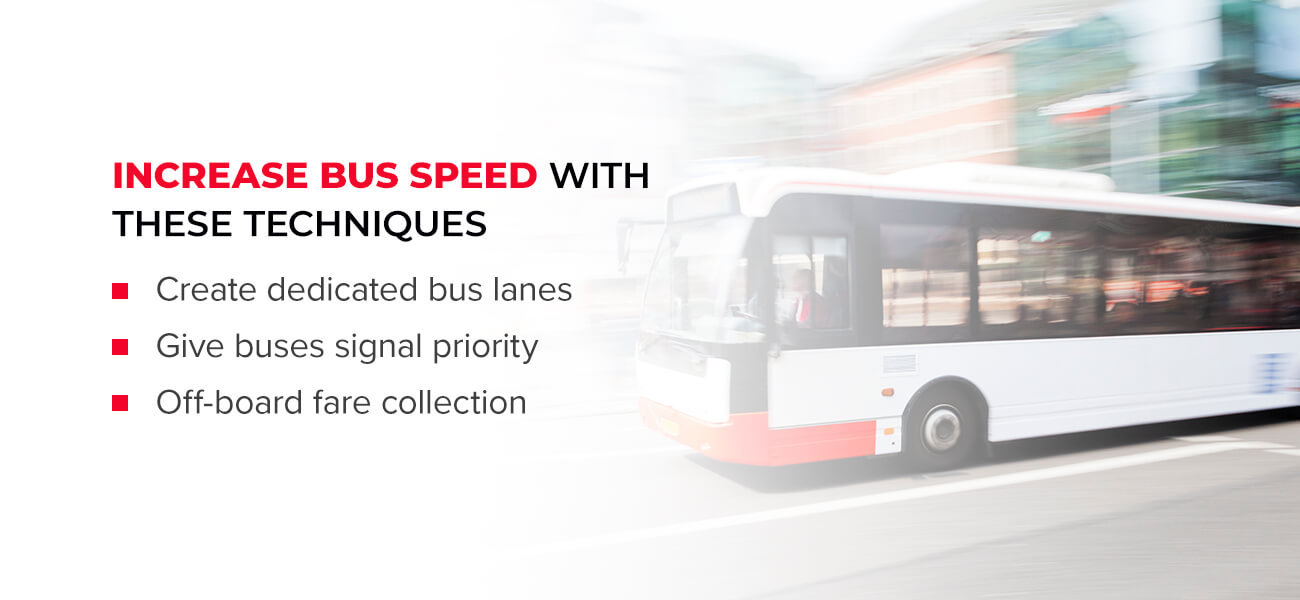Mass transportation is an essential service that many communities provide their members. Public bus systems are beneficial to people in urban communities who want to reduce their environmental impact while commuting or those who don’t have their own cars. Bus systems increase community access to all kinds of services and opportunities.
Making bus system improvements is an excellent way to serve a community better, invite users to access the system, and increase bus system efficiency. Community leaders can learn how to build a better bus system with the strategies below.
Importance of Building a Better Bus System
The American Public Transportation Association identifies around 6,800 organizations across America that provide public transportation for their cities and counties. Improving these public bus systems offers several benefits to communities, including:
- Essential mobility: According to the United States Census Bureau, 46.3% of people who used public transportation to get to work used a bus. The public bus system provides access to employment, community resources, medical care, and recreation that many people would otherwise lack.
- Community planning: Bus systems help community leaders expand development based on transit. Leaders can plan business opportunities and reduce sprawl. Public transportation also expands work opportunities, especially for those without access to other means of transit.
- Enhanced sense of community: Creating a central location for community transportation helps establish a sense of community. A public bus system can also enhance public safety and security.
- Environmental benefits: Using mass transit reduces the need for community members to contribute to road congestion, air pollution, and energy consumption.
Improving the accessibility, safety, and convenience of public bus systems is a key strategy for serving communities and providing greater access to resources and opportunities. When community leaders make impactful bus system improvements in their neighborhoods, they encourage more community members to take advantage of the service.
How to Improve Your Bus System
With adequate planning and community involvement, community leaders can improve their bus system to benefit everyone in their communities. Here are some essential considerations for making bus system improvements to run the best bus system possible:
1. STREAMLINE SCHEDULES
Reliability is key to effective public transportation, so there should be a good bus network with high frequency operating throughout the day. Schedules should be frequent and usable by riders. Whenever possible, streamline bus schedules using a clockface pattern. Predictable schedules create ease of use and easy-to-memorize sequences.
2. MAKE BUSES AND STOPS MORE ACCESSIBLE
Accessibility is a significant factor in usability at public bus stops and pathways. Common issues include:
- Utility poles or overgrowth restricting access on sidewalks.
- Lack of wheelchair-accessible curb ramps and bus entrances.
- Difficult street crossings.
These problems restrict bus system accessibility to people with disabilities. Community leaders can improve these situations with solutions like:
- Implementing aids for the visually impaired, such as raised bumps on the sidewalk at bus stops and auditory cues.
- Lobbying for sidewalk and concrete pad additions and improvements, like leveling and re-pouring damaged walkways.
- Adding ramps and lifts to allow better access for people using wheelchairs, scooters, and walkers.
Making these bus stop improvements can increase boardings from riders with various disabilities.
3. SIMPLIFY BUS ROUTES
Long, branching bus routes are a double-edged sword. Longer routes cover more area but decrease bus stop frequency and capacity. Simplify routes using the following strategies to make bus systems more usable and efficient:
- Break longer routes down: Use shorter routes and connect the ends in transit hubs. This makes routes more adaptable to different needs.
- Reduce bus stops: Eliminate stops on each block, depending onboarding data and input from users. Use clear metrics to defend stop eliminations.
- Eliminate branching: Where possible, reduce system branching. Limiting branches involves more frequent stops, making schedules easier to remember, and evens out the busload.
These bus system improvements might attract more riders over time and make the system more usable.
4. ASSIGN BUSES WITH CLEARER ROUTE NUMBERS
Some bus route numbering systems are relics of an out-of-date arrangement that the city no longer uses. Eliminate complexity wherever possible to create ease of use. Community leaders can streamline the names of buses and their stops. For example, if a city has gridded and numbered streets, the bus running on each road should carry the street number. Bus number 16, for instance, would run down 16th street.
5. INCREASE BUS SPEED


